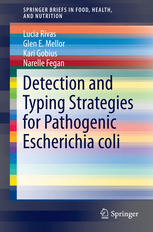

Most ebook files are in PDF format, so you can easily read them using various software such as Foxit Reader or directly on the Google Chrome browser.
Some ebook files are released by publishers in other formats such as .awz, .mobi, .epub, .fb2, etc. You may need to install specific software to read these formats on mobile/PC, such as Calibre.
Please read the tutorial at this link: https://ebookbell.com/faq
We offer FREE conversion to the popular formats you request; however, this may take some time. Therefore, right after payment, please email us, and we will try to provide the service as quickly as possible.
For some exceptional file formats or broken links (if any), please refrain from opening any disputes. Instead, email us first, and we will try to assist within a maximum of 6 hours.
EbookBell Team

0.0
0 reviewsThis Brief will review the methods that are currently available for the detection, isolation, and typing of pathogenic E. coli with a particular focus on foodborne diseases caused by the Shiga toxigenic E. coli group, which have been implicated in a number of significant outbreaks in recent years. Pathogenic forms of E. coli can cause a variety of diarrheal diseases in hosts due to the presence of specific colonization and virulence factors, and pathogenicity-associated genes, which are generally not present in other E. coli. Six pathotypes of pathogenic E. coli are recognized (Shiga toxigenic E. coli, Enteropathogenic E. coli, Enterotoxigenic E. coli, Enteroinvasive E. coli, Enteroaggregative E. coli and Diffusely Adherent E. coli) and certain strains among these groups are major public health concerns due to the severity of disease that they can cause. Methods to detect and isolate these pathogens from a variety of sources are constantly evolving. In addition, the accumulation of knowledge on these pathogens allows for improved intervention strategies.